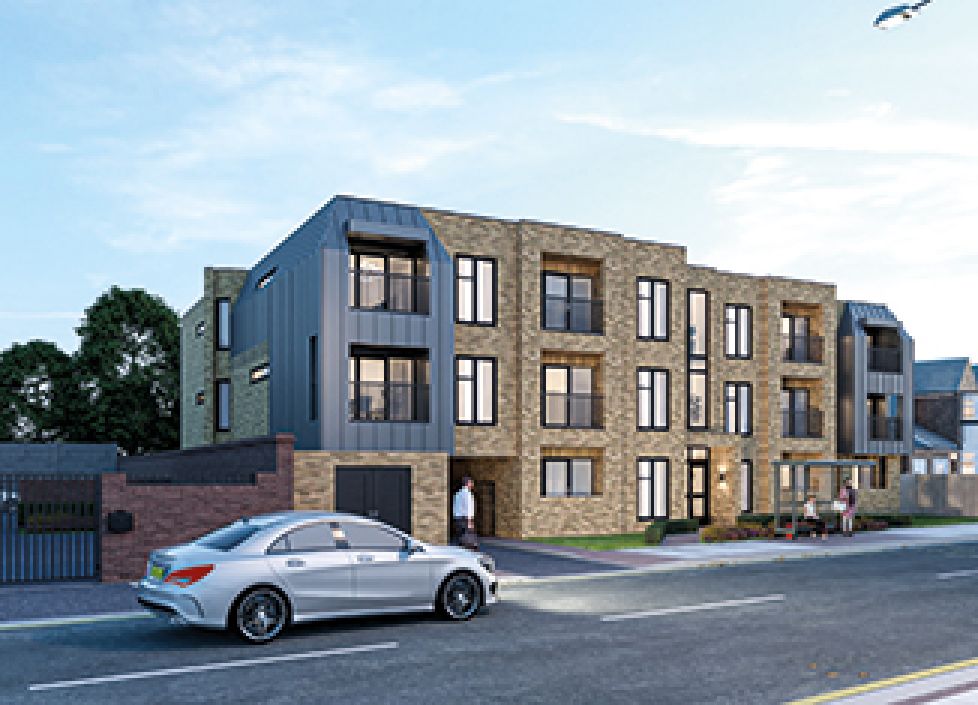The rate of private-sector housebuilding getting underway in London is 34% lower than the national average, according to peer to peer lending firm Lendy, which found that developers started just 15.5 homes per 10,000 people in the capital in 2016, compared to the England-wide average of 23.4, (excludes housebuilding starts by local authorities and housing associations).
Lendy points out that eight out of the bottom 10 performing areas for per capita housebuilding starts by developers last year were in London and the South East, despite the housing shortage being the most acute in this region. The London boroughs of Westminster, Camden and Kensington & Chelsea had among the lowest rates.
This is unsurprising as, according to Rightmove, the average asking price in these London Boroughs fell by 5.3%, 4.7% and 9.4% respectively, in the 12 months to October 2017. Also, across London, the time it takes to sell a property has increased by 20% over the past year, from 56 days to 65 days.
By contrast, the Midlands dominated the top of the table, with five out of the 10 best performing areas for per capita rates of new private sector house-building including Stratford-on-Avon, and parts of Leicestershire and Derbyshire.
Again, this is not surprising as Rightmove reported asking prices in East Midlands rising by 4.7% in the year to October 2017 and the West Midlands was the fastest rising region in England, with an annual rise of 5.5%.
Is a lack of funding the main reason?
Lendy says that lack of competitively priced funding from banks to smaller developers has led to low housing starts in London and the South East – where site purchase costs are highest. Though the UK urgently needs a rapid increase in homebuilding, it is not happening fast enough – ironically in regions where demand is greatest, says the firm.
Liam Brooke, director and co-founder at Lendy, commented: “Funding is the critical missing piece of the jigsaw, with banks still reducing lending to this sector.”
The company says that ensuring all land is registered with the Land Registry would be one solution to increase the supply of development land. It explains that at the moment it can be difficult to purchase potentially suitable sites because it can often be hard to identify who owns them, with only around 20% of all land in England & Wales currently registered with the land registry.
Brooke added: “Enabling developers to regenerate more pockets of under-exploited land needs to be made easier, to make the most of the available space. There are, for example, plenty of brownfield sites in and around the capital which are ripe for redevelopment, but there are also areas on the edges of the ‘Green Belt’, which are not environmentally or agriculturally valuable or attractive that could also be considered.
“While a highly charged political issue, there needs to be a sensible, rational debate which takes into account that not all Green Belt land is actually beautiful rolling countryside that warrants blanket protection”.
SME housebuilders blame a lack of land more than a lack of finance
A recent (September 2017) Housebuilding Survey by FMB (Federation of Master Builders) received 124 responses from SME house builders.
Respondents were asked to identify what they saw as the major barriers to increasing their output of new homes, both currently and looking ahead over the next three years. ‘Lack of available and viable land’ was the most commonly cited barrier to increasing output (62% of respondents) for the third year in a row,
In second place came ‘lack of finance to the company’ (54%), with 17% of respondents reported improved lending conditions over the past year, but 14% reporting deteriorating lending conditions and 69% reporting no change.
Third was ‘the planning system’ (49%), while the percentage of respondents citing ‘a shortage of skilled workers’ as a major barrier rose again to 42%.
The rapidly growing problems are both a lack of skilled workers and materials
Respondents were asked a number of questions relating to access to labour, including about wage rises, the impact of Brexit and the possibility of using off-site construction:
• 57% report wages for bricklayers had increased by at least 6% in the past year and nearly a third (31%) reported them rising by more than 10%.
• 35% of respondents said that they employ EU workers, either directly or as sub-contractors, and 33% of respondents believe that the ending of free movement for EU workers will have some impact in constraining their ability to build more homes.
• 39% of respondents say that they cannot see their firm ever using off-site construction methods, though 28% think it is likely they will, while 33% didn’t know if they would or not.
However, as can be seen in the table below, the percentage of builders that view a lack of land, unavailable finance or planning issues as a major constraint on construction has been falling over the past two years. Meanwhile, the percentage that consider a lack of skilled workers and a shortage of building materials as constraints has been rising over the past two years.




















